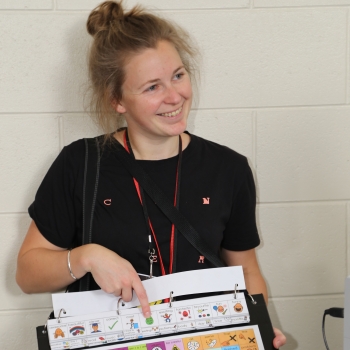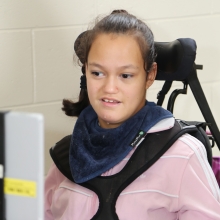

Assistive Technology may be used to help a person speak, write, learn or control their environment.
Speaking
Communication Assistive Technology / Augmentative and Alternative Communication (AAC) may be used to replace or augment a person’s speech. Communication equipment is divided into two categories, low-tech and high-tech.
Low-tech includes:
- Core Communication boards
- Choice Boards
- Schedule Boards
- Alphabet Boards
- Communication books such as PODD
High-tech includes:
- Speech Generating Devices
- Tablet devices with communication apps
- Computers with communication software
- Voice amplifiers
- Attention alarms
Writing and Learning
Assistive Technology may be used to replace or augment a person’s ability to write, learn and access the curriculum as well as provide tools for supporting memory loss.
Low-tech includes:
- Pen grips
- Alphabet charts / "alternative pencils"
- Schedule Boards
High-tech include:
- Portable or desktop computers with assistive software
- Tablet devices with assistive apps
- Smart phones
Alternative Access
All assistive technology may be adapted so that people with a physical disability can operate the device in a different way (Alternative Access). Technology is adapted or customised to enable independent use. Options include:
- Keyguards
- Styli
- Accessible keyboards
- Alternative mouse options
- Rate enhancement software
- Speech Recognition
- Switches with scanning options
- Eye-gaze
- Environmental Controls
